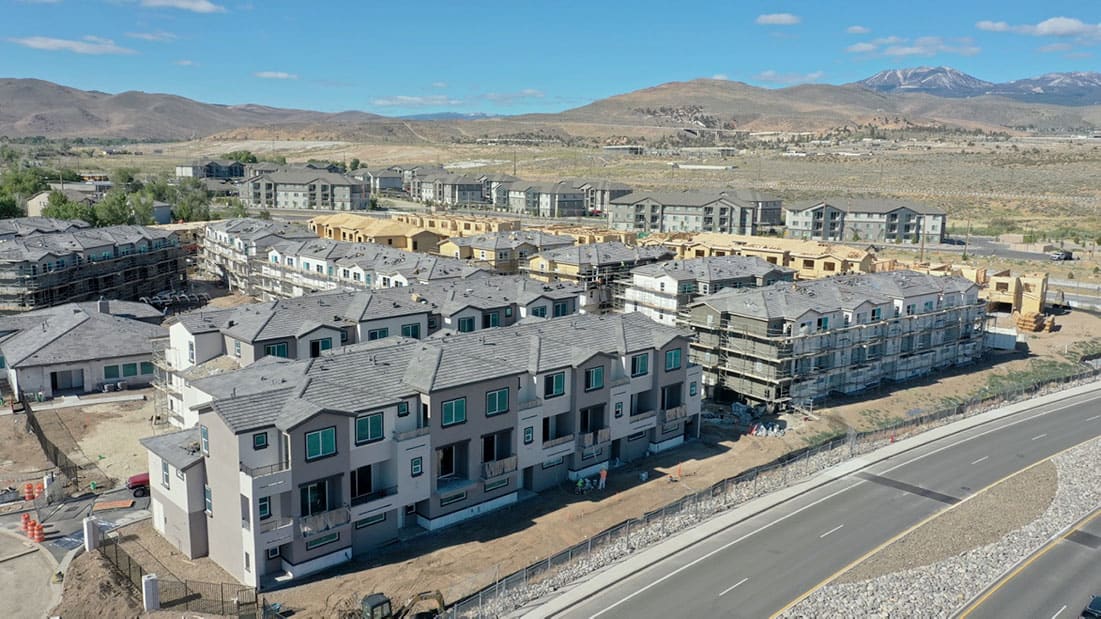
The product development process: A uniquely holistic approach.
The journey begins at the end.
It’s not a Zen koan, but a description of the Pacific West product design process.
Traditionally, an architect creates a concept, draws up detailed plans, and presents it to the development partner or client. The plans then trickle their way down to those who will have to execute the vision.
Not at Pacific West.
Before the architect sketches an initial concept, before he boots up the 3D CAD program, he meets with members of the Pacific West Product Development team, which includes representatives from engineering, construction, subcontracting, financial modeling, property management, marketing, and when relevant, sales.
Because Pacific West uses one of the industry’s most comprehensive design-build processes, most vital services are in-house, including architecture, engineering, construction, subcontracting, even sales and marketing. Other key services, such as property management, are provided by associates that have worked with Pacific West for decades.
The team works collectively to outline the goals for the end product. What will satisfy renters and buyers? What features will increase market appeal and demand? Will it retain its appeal long into the future? Does the building design maximize unit density while preserving privacy? Can the product be built efficiently? Does the product take advantage of the latest materials? Can it be marketed effectively?


Nearly all design-build services are featured in-house.
Pacific West products aren’t the singular vision of an architect.
“It’s a very collaborative approach,” explains Cole Dowty, Vice President of Product Development for The 1085 Group, Pacific West’s in-house design and engineering firm. Dowty explains: “Collaboration might seem like a very basic approach but you don’t always see it in the construction industry. Products are often developed before the architect even knows who will be building it.”
Too often architects operate in isolation. They follow a very linear approach. They do what they do then send their design to the “next in line,” in this case, to the engineers. They in turn do what they do and send it to the next in line. And so on. The construction team and its subcontractors are typically the last in line and are left to devise ways to execute a vision new to them.
Pacific West involves everyone from the concept stage.
“We get involved from the very beginning while a product is still involved in the initial design stage,” explains Dowty.
Because Pacific West self-performs many subcontracting services, the company is able to “think like a subcontractor” from concept on.
Dowty says he’ll also consult with outside subcontractors and material suppliers to make sure maximum construction efficiency is possible. “We want to find any obstacles in the design stage, not on site. We want to resolve any conflicts before we start building. We’re not going to force something on the subs. If they see problems, we’ll take it back to design.”


Pacific West involves everyone from the concept stage.
The construction team stays involved in refining the product throughout every stage.
“Once a new product is framed, we do walks with subs to see what we can improve, what needs to be changed for the next version,” says Dowty.
After a project has been completed, reps from the Product Development team reconvene and carefully go through the product(s) to determine where they can improve quality and efficiency.


With each iteration, construction efficiency is enhanced.
“We have multiple generations of the same project that feature micro level improvements throughout,” explains Dowty. With each iteration, construction efficiency is enhanced.
One of the most overlooked aspects in product development is the cost, not the cost to design the product, or even to build it, but what can be expected in terms of investment return.
“We always design with an eye on the financial implications,” says Lew Zaumeyer, the Architect of The 1085 Group. “Throughout the process we’re checking on cost versus expected return on various scenarios.”
Pacific West uses what is probably the most sophisticated financial modeling in the high-density industry. Clients and investment partners can instantly see the variables and possible outcomes when using different products or product mixes, various building layouts, density ratios, even different building materials.
“Being able to show our partners exact pricing and expected return, right down to the penny, in real time is a tremendous tool for our clients,” explains William Pennington, CEO of the Pacific West Operating Group. “It’s a sophisticated modeling program that we developed entirely in-house, and it provides us with literally thousands of detailed variables, all of which can be changed on the fly.”


We always design with an eye on financial implications.


